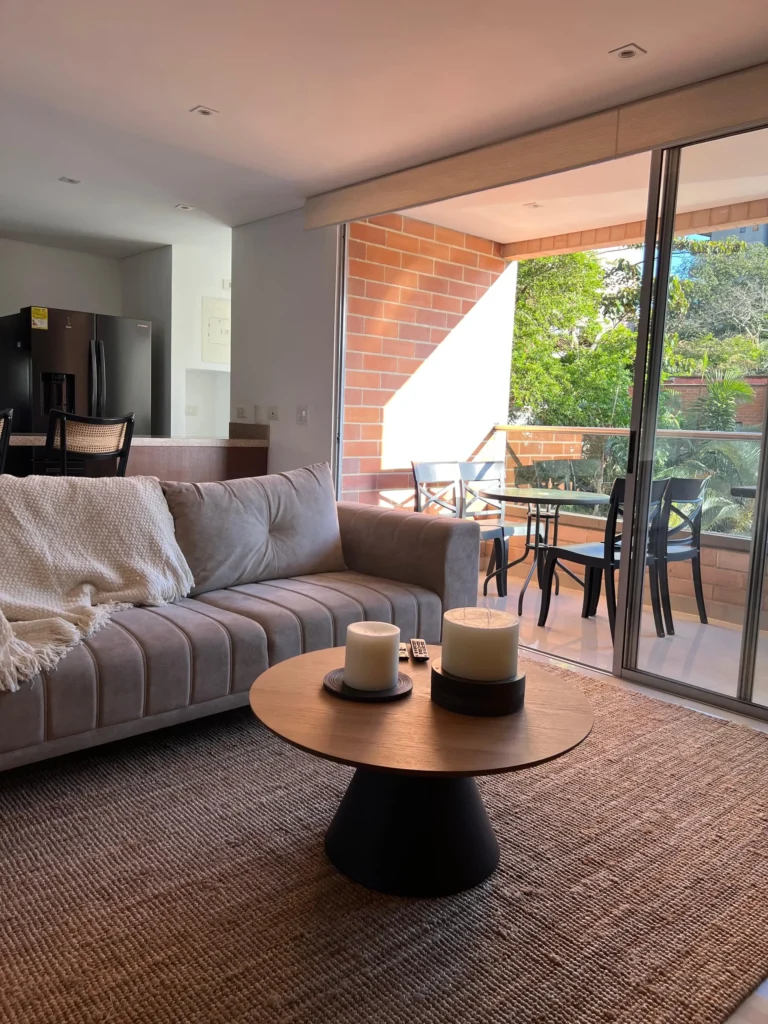TLDR? Driving in Medellin is safe, although the laws are a bit different than in other countries.
One of the most comfortable options to travel and explore different areas of a city is with a private car, an option that has become highly requested and easy to manage by tourists all over the world.
However, there might be myth-induced fears about the safety of each place we go, making us wonder: is it safe to drive there?
Short answer: yes! Many educative road safety campaigns have allowed the paisas to drive cautiously and take preventive measures. You’ll find good roads with signaling.
Of course, being in a new city as a foreigner brings us doubts. Above all, driving in a foreign land can be a trigger since it’s an activity that demands constant caution.
However, a large number of tourists prefer to drive Medellin for more comfort, as they’re able to get everywhere faster. This way, you can take your time to enjoy the tourist sites and admire the natural beauty.
If you’re a tourist renting a car in Medellín, check this guide and find out everything you need to know!
The Roads and Streets in Medellin

Medellin has good roads, with hardly any breakdowns or holes. You’ll find a maximum of 3-4 cars on main roads and highways, which can be little depending on where you’re coming from.
You’ll have several traffic signs for guidance: indications of stops, speed information, information on upcoming neighborhoods or cities, bike zones, pedestrian crossings, or zebras, among others.
Medellin is a city with an easy-to-handle distribution. If you follow the maps and signs, you won’t get lost! Ok, we can’t ignore that Laurels, for example, can get tricky, but it’s not impossible!
Road Safety
I won’t give you a lecture on the traffic code, and much less do I want to bore you, but the following information will improve your experience driving in the city.
Medellin has high-quality roads. Here’s how to navigate them.
Speed

Medellin has a low maximum speed compared to other cities. It’s generally between 37 and 50 miles/hour (60-80 km/h).
Driving speed in rural areas and highways is also limited to 37 or 50 miles/h, depending on the road. Although in some sections, you may see a sign indicating that you can go 62 miles/h (100km/h) or more.
Other established limits are that drivers must reduce their speed to 18 miles/h (30 km/h) in the following conditions:
- When passing through residential areas.
- When traveling through school zones.
- When visibility conditions are not adequate.
- To circular near an intersection.
Photodetection cameras are strategically located around the city. Platforms like Waze can identify and announce them.
These cameras are responsible for ensuring and regulating, among other aspects, that drivers are complying with the established speed. In case there are excesses, a photo of the car will arrive at the address with the time, date, and speeding that has incurred charging a fine.
Signaling

When you’re outside built-up areas, you’ll notice few signs. That often makes it difficult for tourists to navigate.
You’ll see “No parquear” (No Parking) signs indicating that you cannot park your car. There’s a prohibition before and after them.
Authority Controls

There’s also constant supervision of road entities such as the Transito de Medellin or the Policia de Transito, carrying out controls at different points in the city, ensuring everything’s in order, and even doing breathalyzer tests.
In Medellin, driving under the influence of any minimum amount of alcohol is prohibited.
You must bring with you at the time of a routine inspection:
- Car rental contract
- SOAT or car insurance
- Mechanical Technician Review
- Valid ID or Passport
- National driving license
- International driver’s license (it’s not required, but if you have one, it’s better to show it!)
Measures for Peak Hours

Cities everywhere can have a high transport flow at certain times.
Due to that, Medellin has implemented the Pico y Placa. The initiative’s responsible for restricting the mobilization of cars whose license plate ends in specific numbers for one day a week.
But the restriction doesn’t last all day. You must have the car stored between 5 am and 8 pm. Choose public transportation or environmentally friendly systems!
You can also hire a private driver for that day.
Tolls

There are several tolls on the city’s main roads, so I recommend you write them down in your budget.
On average, a toll costs approximately COP 8,000 or USD 1.82.
When going through a toll, you can ask for information about the road and places to eat on your way. Don’t hesitate to ask for help! The local people are friendly.
Seat Belt Law

You must know that only two people can travel in the front seat, depending on the type of vehicle.
On all roads, whether rural or urban, using the seat belt is mandatory for both the driver and the passengers in front of the vehicle.
Children under the age of 10 cannot travel in the passenger seat.
Children under two years old must travel in the back of the car with the corresponding child seat that guarantees their protection.
Yield the Way

In Colombia, the driver must yield to all traffic in a roundabout. That includes bikes, cars, and any streetcar or light rail entering or approaching the roundabout.
Yielding also refers to vehicles approaching from the right.
Failure to yield to a vehicle in the roundabout could result in the driver facing a high fine.
Driving Side

In Medellin and Colombia, the driving side is the right side of the road. Some tourists from different countries often find this type of driving side novel.
Parking Lot
It’s important to know some information when parking. We don’t want any inconvenience in our trip to visit Medellín.
If any vehicle breaks the parking laws, it’ll be towed. In this event, you’d have to call 999 to find the vehicle’s location and pay a fine.
Upon arrival, the driver receives a ticket to make the payment. You must show it again when leaving the commercial area of the guarded parking lots.
Do You Need an International License to Drive in Medellin?

No. The national or foreign license is valid to drive not only in Medellin but also in Colombia.
For foreigners, this possibility’s limited to the time of stay in the country. You’re entitled to three renewable months.
If you’re residing in the country for study, work, or another reason, you must carry a Colombian driving license.
You can also manage an international driving permit online for free. In any case, you must request it with enough time in advance as it can take time.
Check the State of the Roads

If you’re an extremely cautious person, I inform you that you can check the state of the tracks.
You can do all this from any mobile device or computer. You will be able to inform yourself about the novelties of the roads and closures that could affect your journey through different road sections.
State entities provide two options to know the state of the roads.
The first option is entering the INVIAS safe destination information system. Here you can select the route of your route and see the information of interest, such as news, tolls, and more.
You can also read the “Reporte DITRA” which is information on the roads that present novelties such as scheduled closures.
The second consultation option is by telephone. They’ll give you information about the state and conditions of the roads you’re going to travel. You can communicate with the free line #767, option 2.
Driving at Night

Although Medellín is a fairly safe city, it’s always best to be cautious because unpleasant events can occur anywhere in the world. I recommend you don’t drive at night.
Hire a Private Driver to Drive in Medellin

If you think driving in another country is complicated and you want the freedom to travel in a private car wherever you want, there’s always the option of hiring someone to take you to any destination.
For this, several agencies offer the service of vehicles with drivers throughout the country.
Other Recommendations

Here are some recommendations for driving in Medellin!
- Regarding the outside environment when driving in this city, many vendors pass by at traffic light stops offering all kinds of products or cleaning car windshields. They may be very insistent, but don’t be scared! If you decide not to access it, you aren’t obliged to pay any amount.
- Speed bumps can be a bit high, so slow down and go over them slowly! Don’t ruin your car by not measuring the space well.
- You must be attentive to the signs and traffic lights for cars, pedestrians, and bicycles. Everyone has priorities and opportunities to cross, so respect them and wait your turn.
- If you decide to go out and consume liquor, don’t take the car, or if you do, make sure the insurance covers a “chosen driver” who picks you up at the time and place you request.
- We know there are pedestrian bridges, but some prefer to avoid them and cross avenues with the risk of causing an accident. Be very careful!
- Likewise, motorcyclists tend to incur some recklessness of which you should be alert but not afraid! Consider that Medellin’s a city with many of these two-wheeled motorized models that, once knowing the roads, can be too trusting.
Driving in Medellin Is Safe
It’s enough to know some basic driving rules and regulations. However, generally speaking, driving in Medellin is safe!
Make sure you have the documents in order when you receive your rental car, and venture into the City of Eternal Spring as a driver!
If you like this blog, you might like the Casacol Instagram page to keep up with all the new articles. Anything we need to update or correct? Care to contribute? Email us at blog@casacol.co







